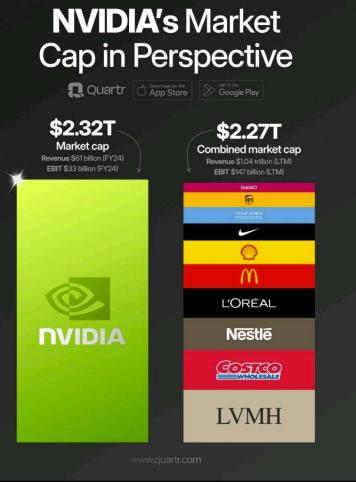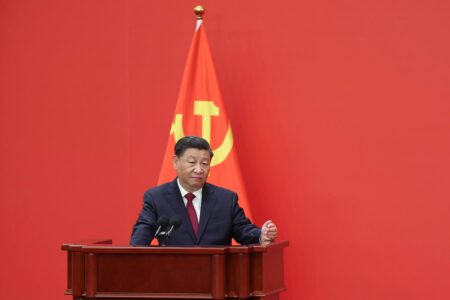I didn’t want to write about NVIDIA
NVDA
DIA
Then I sat down with Sumant Wahi, a technology PM who has recently joined Man Group and will launch his fund early next month. Sumant has a fascinating background. He was a Graphics Microchip engineer working for companies like Imagination and Altera
ALTR
INTC
We found ourselves returning repeatedly to the idea of the Killer App. This idea – how to identify the product or use case that will justify current valuations – is understandably one of the market’s driving obsessions. AI is still at this point in time a bauble: producing pretty images or suggesting holiday destinations, it has been embraced by the consumer but businesses remain sceptical. The consumer is largely comfortable with the risks entailed in using a product that is – depending on which specific task you’re setting it – only somewhat accurate.
It comes down to an asymmetry of risk. What’s the worst that can happen to me on ChatGPT or Midjourney? I end up on a beach that was concreted over in 2022, or post a badly-edited photo to Instagram. Enterprises on the other hand need 100% reliability – a hallucination could end up refunding the wrong customer, delivering to the wrong address, landing a plane at the wrong airport.
Consumer AI has so far been an enormously effective advert for a product that does not yet really exist. The question is do we need to know what the Killer App is to justify valuations? Possibly not.
Sumant pointed me towards the chart below, from Morgan Stanley
MS
It gives us an idea of quite how early we are in this current cycle. NVIDIA is (at least for now) an enabler. We don’t really know what the next phases of the cycle will look like. We can guess that the likes of Microsoft
MSFT
AAPL
GOOG
AMZN
Here we come to the important insight: the rigorously strategic way in which Jensen Huang and his team at NVIDIA are managing this period of growth. We might draw a distinction here with Cisco in the dot-com bubble. Rather than trying to push through every possible sale in the quickest time possible, NVIDIA management is asking its customers to justify their orders. If it thinks their data centre won’t be ready in time, it will delay delivery. It’s a clear attempt to extend this period of market dominance, recognising the investment that the firm itself has in the success of its customers.
They are also moving aggressively into parallel and complementary businesses, hoping to colonise both the enabler and builder segments of the monetization cycle. Their software and services business is already making more than $1bn in annualised sales. Not only are they making the chips, but also the servers that house them, then designing their own cooling systems for these servers, letting out their own ‘cloud services’ and pushing their own ‘AI operating system’ directly to their customers’ customers. It is as if they have a laser-like focus on the mistakes that firms made in the 99/00 bubble and are seeking to do everything they can to avoid this.
A final thought that follows from this. People are (quite rightly) highly focused on the concentration in the S&P 500. A look at the chart below tells you why.
I want to think about this in the light of the specific case of NVIDIA. We have highlighted the extraordinarily self-aware fashion in which Jensen Huang is steering the company, as if the spectre of all of those who rose and fell in the last tech bubble were hanging over him: Baltimore Tech, Lucent, Sun Microsystems, 3Com. One way of comprehending the concentration in the S&P is to recognise that NVIDIA is representative of a broader theme. Financial resources are currently concentrated in the hands of a few key players in a way that is without recent precedent. They are very clearly using this position of strength to deepen the moats that surround them, both by acquisition (think NVIDIA’s acquisition of Mellanox, or Apple’s purchase of P.A. Semi) and highly strategic organic growth. One way of justifying the concentration in S&P leadership is to recognise that the actions of the leaders is itself an important driver of this concentration. Management teams are taking clear and deliberate steps to deepen and prolong their period of hegemony. As such, we shouldn’t expect this period of concentration to end any time soon.
Read the full article here
















